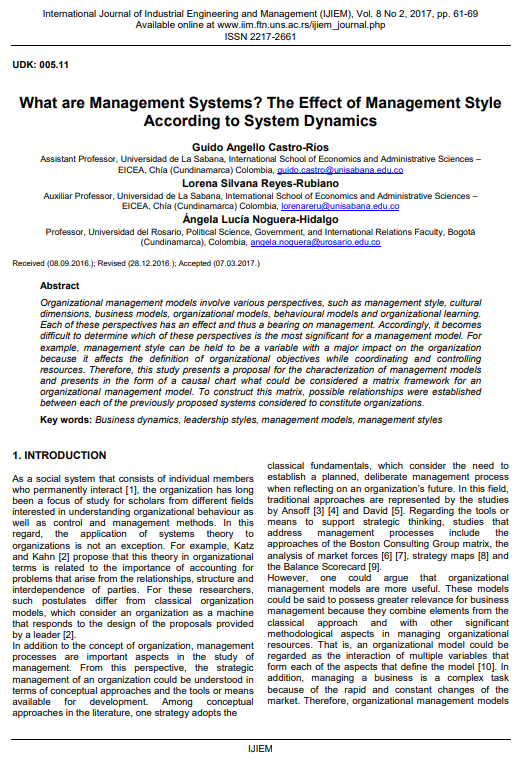What Are Management Systems? The Effect of Management Style According to System Dynamics

Published 2017-06-30
abstract views: 39 // FULL TEXT ARTICLE (PDF): 0
Keywords
- Business dynamics,
- leadership styles,
- management models,
- management styles
How to Cite
Copyright (c) 2023 International Journal of Industrial Engineering and Management

This work is licensed under a Creative Commons Attribution 4.0 International License.
Abstract
Organizational management models involve various perspectives, such as management style, cultural dimensions, business models, organizational models, behavioural models and organizational learning. Each of these perspectives has an effect and thus a bearing on management. Accordingly, it becomes difficult to determine which of these perspectives is the most significant for a management model. Forexample, management style can be held to be a variable with a major impact on the organization because it affects the definition of organizational objectives while coordinating and controlling resources. Therefore, this study presents a proposal for the characterization of management models and presents in the form of a causal chart what could be considered a matrix framework for an organizational management model. To construct this matrix, possible relationships were established between each of the previously proposed systems considered to constitute organizations.
Article history: Received (08.09.2016); Revised (28.12.2016); Accepted (07.03.2017)

